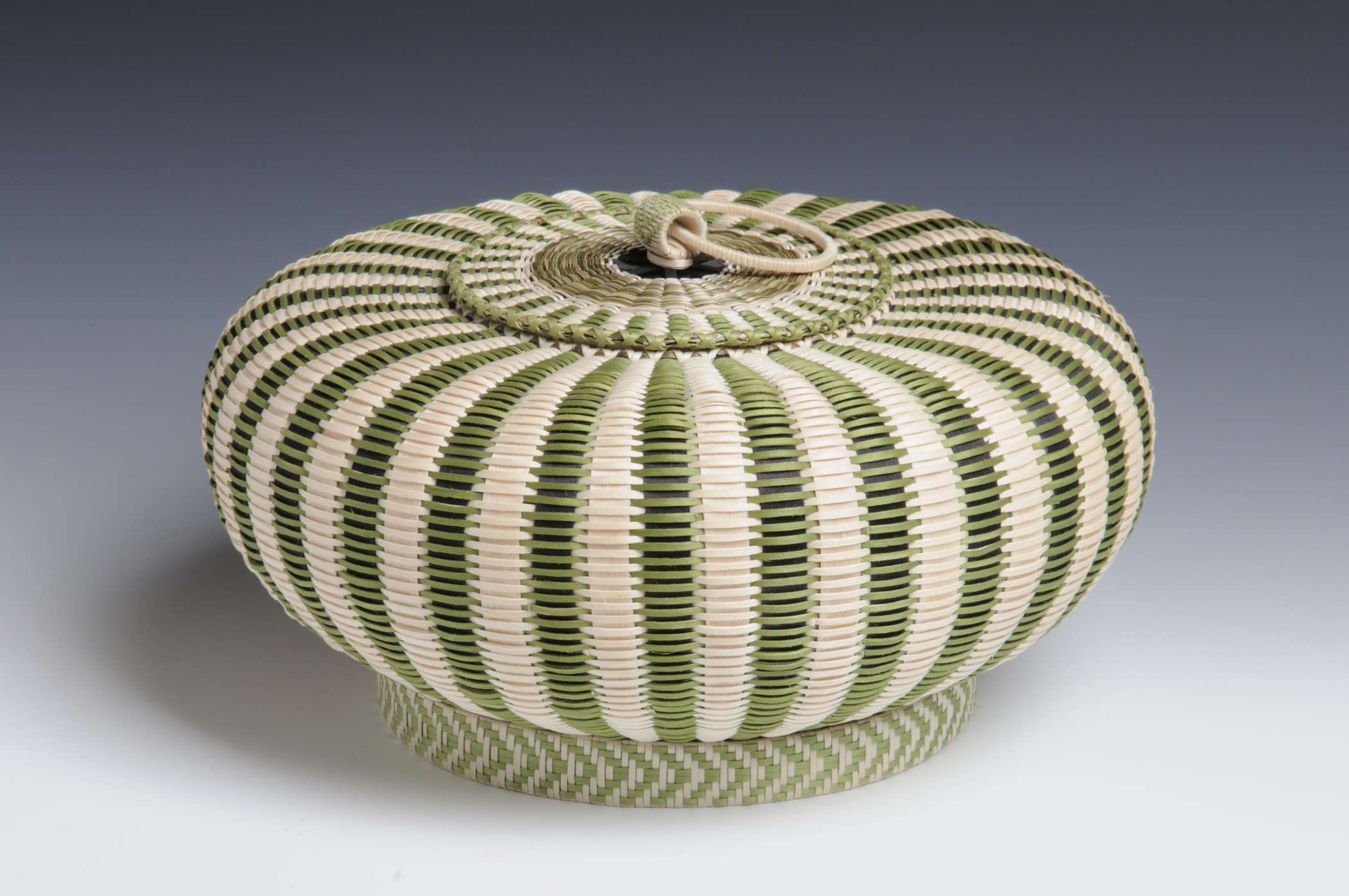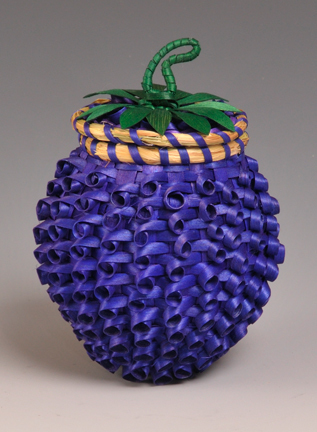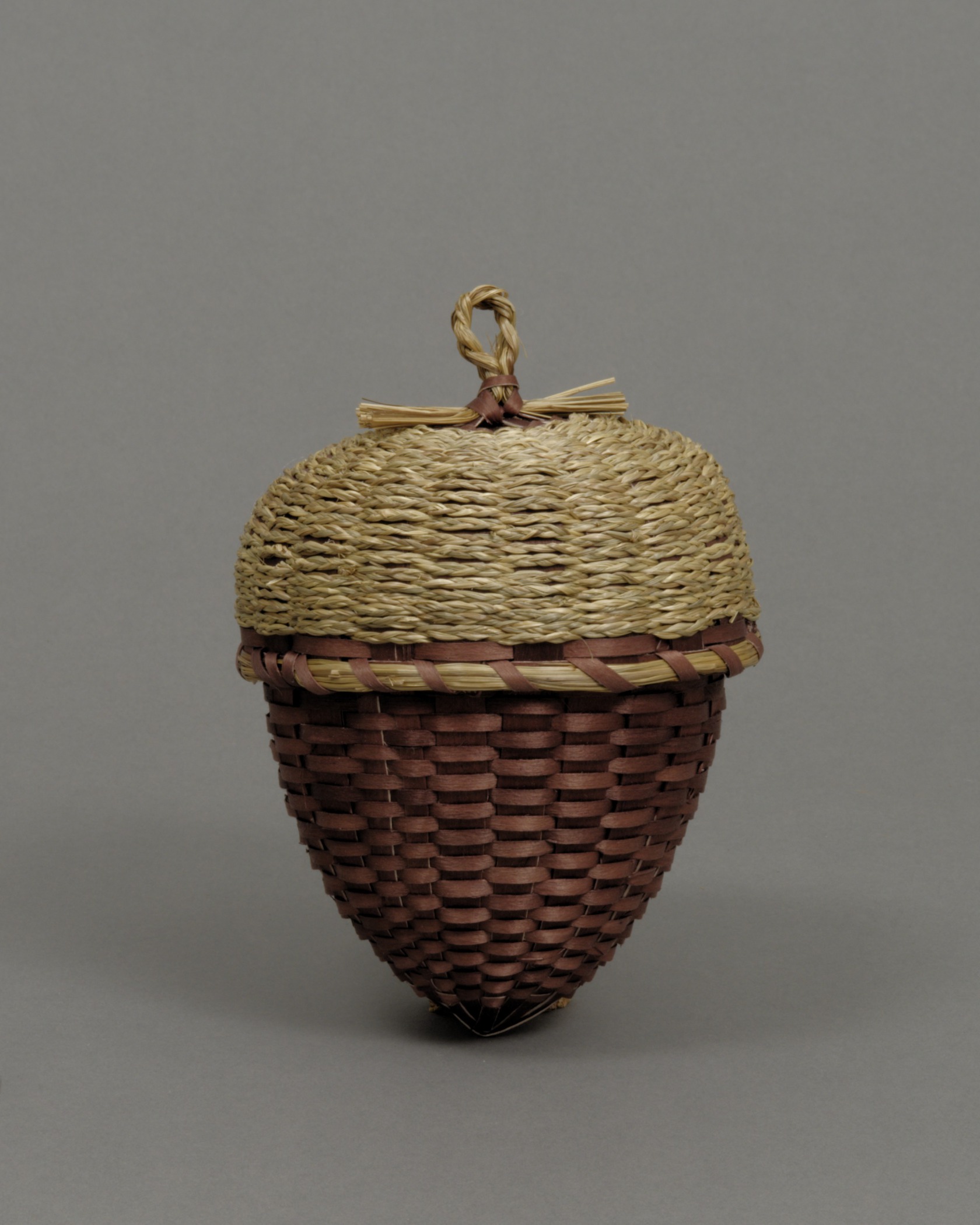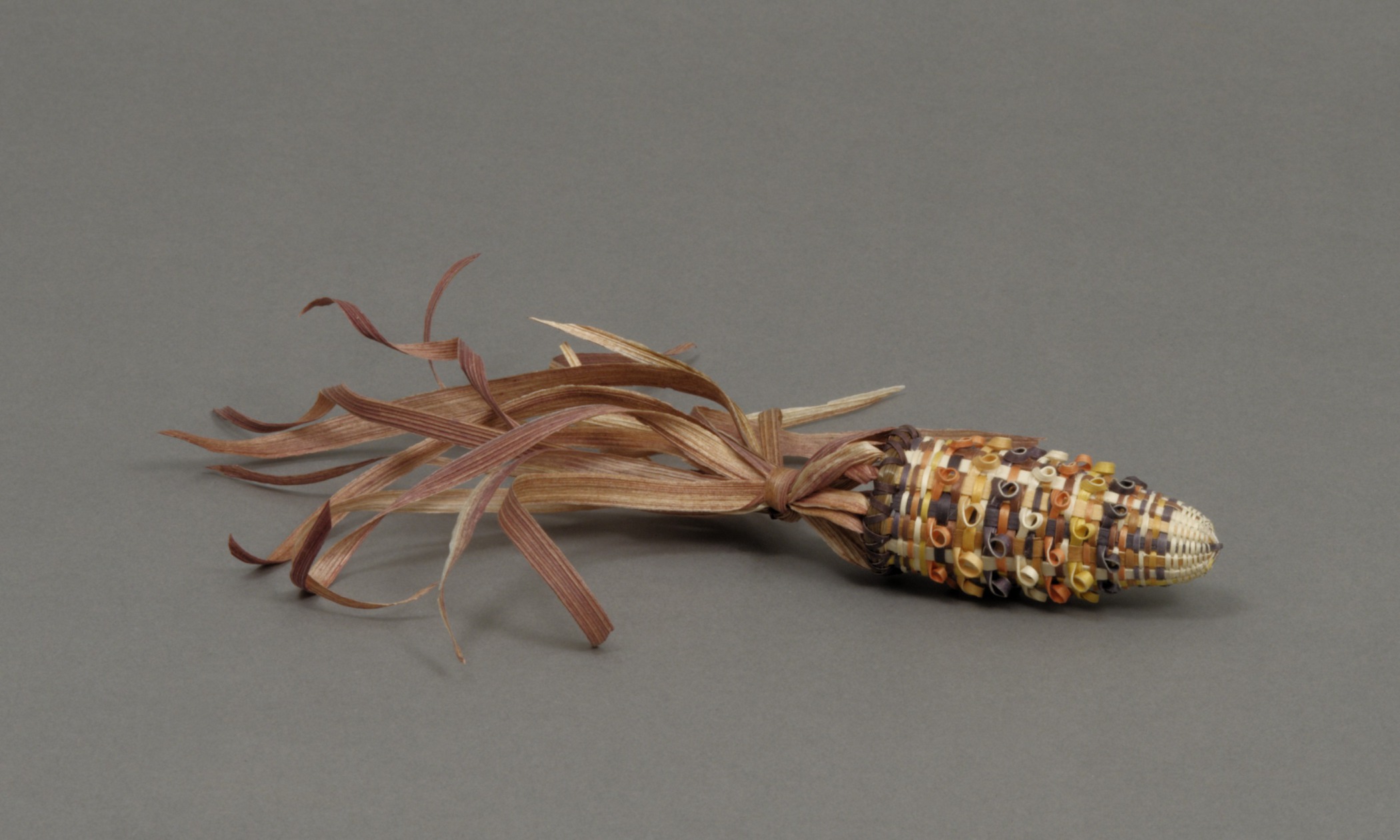Sarah Sockbeson, American (Penobscot), born 1983
Miniature corn basket
- 2008
- Brown ash, sweetgrass, and cornhusk; dye
- 8 1/4 × 6 3/4 × 1 3/16 in.
Hood Museum of Art, Dartmouth College: Purchased through the Alvin and Mary Bert Gutman ’40 Acquisition Fund; 2008.48.3
visibilityLook & DiscussIn addition to hunting, fishing, and gathering, the people of the Northeast Woodlands cultivated crops to supplement their diet. They grew corn, beans, and squash, the celebrated “three sisters,” together to protect the plants and enrich the soil. The Wabanaki also cultivated pumpkins, ground cherries, Jerusalem artichokes, sunflowers, and tobacco.
Penobscot artist Sarah Sockbeson made this basket using the traditional Wabanaki basket weaving materials of ash and sweetgrass, but also added dried cornhusks, the leaves that wrap around and protect an ear of corn.
Explore the Object
This basket may represent a type of indigenous corn that grows on short plants, with the cobs barely reaching 4 inches in length. Indigenous corn is highly nutritious and ripens quickly in the short growing season of the Northeast.
Sarah Sockbeson captured the texture of the cob with a curly weave of ash splints, and by alternating the color of the ash splints between natural, yellow, cinnamon, and dark brown. This work is more like a sculpture than a functional basket. Sockbeson wove it as one piece. It does not open.
Meet the Artist
Sarah Sockbeson’s great-grandmother was a basket weaver in the early 1900s. The tradition of basket weaving was not passed down in Sarah’s family, however, so she apprenticed with Jennifer Neptune, an experienced artist from another famous basket-weaving family, that of Clara Neptune Keezer. Clara Neptune Keezer’s blueberry basket is also featured in this unit.
Sarah Sockbeson has said of her work:
For my inspiration, I look to the past, present and future. I see it as being vitally important to acknowledge the traditions of the past. I have a responsibility to honor my ancestors that have practiced the art of basketry long before I was alive, to ensure that it is not lost or forgotten. It gives me great pride knowing that I am able to perform this tradition in almost all the same ways it was done years ago. To create a work of art out of raw material such as the ash tree is almost magical. As I weave, it is almost like having a spiritual connection with the past.
(See the artist’s website, sarahsockbeson.com/artist)
Related Objects
There are many other baskets in the Hood Museum of Art’s collection that reflect the gathering and agricultural practices of the Wabanaki.
Penobscot, pumpkin basket, mid–late 19th century. Brown ash and sweetgrass, height: 11 in. Hood Museum of Art, Dartmouth College: Gift of Mrs. Ida Farr Miller; 44.18.8794.
Wabanaki baskets in the form of corn and squash have always been popular among collectors of Native American baskets. These foods are associated with Native traditions and the assistance native people provided to early European settlers learning how to cultivate crops in a new environment.
A Penobscot basket weaver created this basket in the shape of a pumpkin over 100 years ago. It is about 10 inches tall. The bottom of this basket shows how baskets are woven. The weaver creates a star pattern made up of ash splints. These become the vertical splints. She then weaves a separate splint horizontally over and under each leg of the star. The weaving builds from the center of the bottom of the basket and progresses up the sides to the top.
Matthew Dana, American (Passamaquoddy), born 1979, strawberry basket, 2008. Brown ash and sweetgrass; dye, 4 × 3 in. Hood Museum of Art, Dartmouth College: Purchased through the Alvin and Mary Bert Gutman ’40 Acquisition Fund; 2008.47.
Strawberries are particularly loved because they are the first fruits of the summer. In the past, they were a welcome treat after a long winter of eating dried and preserved foods. This basket by Matthew Dana is 4 inches tall.
How has the artist captured the shape, color, and texture of a strawberry?
How is this strawberry basket like the curly blueberry basket? How is it different?
Kim Bryant, American (Penobscot), born 1964, pinecone basket, 2008. Brown ash and sweetgrass; brown dye, 4 1/4 × 1 1/2 in. Hood Museum of Art, Dartmouth College: Purchased through the Hood Museum of Art Acquisitions Fund; 2008.69.
This extraordinary basket, created by Kim Bryant, uses what is known as a porcupine weave to create the scales of the pinecone. A porcupine weave involves folding and pinching the ash splint to create a “v” that projects from the surface of the basket. The weaver, Kim Bryant, also twisted and splayed the sweetgrass on the lid to look like pine needles. The entire basket is only 4 1/4 inches tall!
Pinecones could be harvested for the edible seeds that grow beneath the scales. The needles also make an excellent tea rich in vitamin C.





